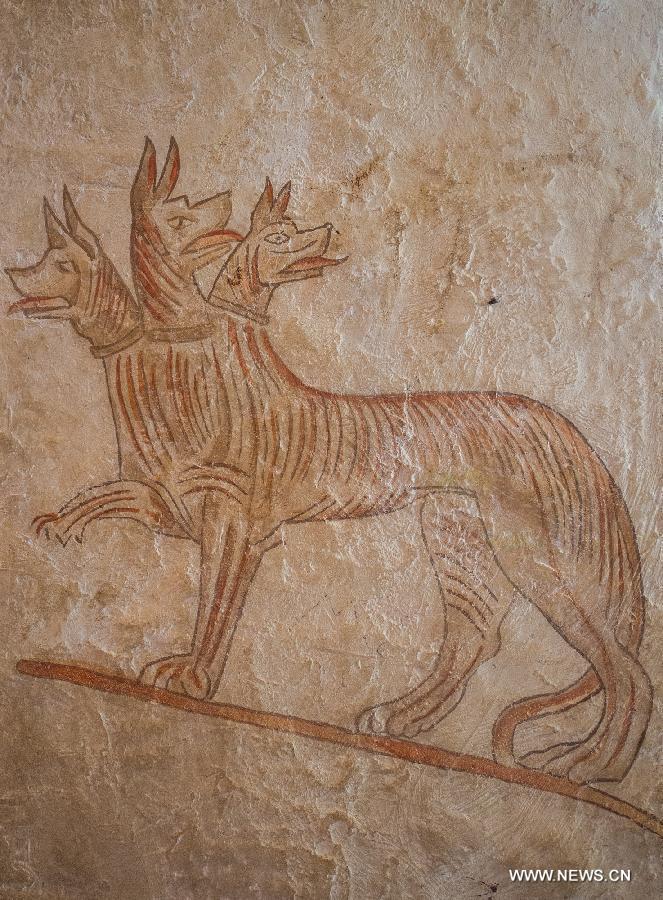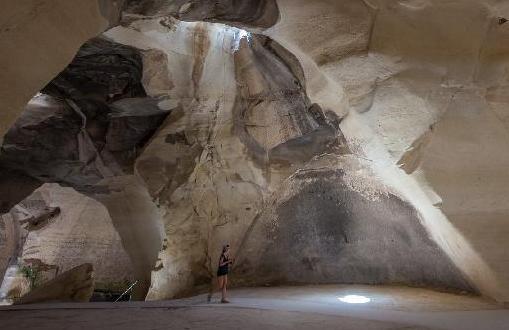Scenery of Bet-Guvrin, Maresha National Park in Israel
 0 Comment(s)
0 Comment(s) Print
Print E-mail Xinhua, July 1, 2014
E-mail Xinhua, July 1, 2014
A painting of a mythological animal is seen on the wall of the Apollophanaes Cave at Bet-Guvrin and Maresha National Park, Israel, on June 28, 2014. This was a family tomb. The deceased were placed in niches and their bones were later removed to enable repeated use of the niches. Colorful decorations described various figures and animals, real and mythological. Caves of Maresha and Bet-Guvrin in the Judean Lowlands as a Microcosm of the Land of the Caves in Israel were inscribed on the UNESCO World Heritage List on June 22, 2014. This "city under a city" is characterized by a selection of man-made caves, excavated from the thick and homogenous layer of soft chalk in Lower Judea. It includes chambers and networks with varied forms and functions, situated below the ancient twin towns of Maresha and Bet Guvrin, that bear witness to a succession of historical periods of excavation and usage stretching over 2,000 years, from the Iron Age to the Crusades, as well as a great variety of subterranean construction methods. The original excavations were quarries, but these were converted for various agricultural and local craft industry purposes, including oil presses, columbaria (dovecotes), stables, underground cisterns and channels, baths, tomb complexes and places of worship, and hiding places during troubled times. (Xinhua/Li Rui)






Go to Forum >>0 Comment(s)